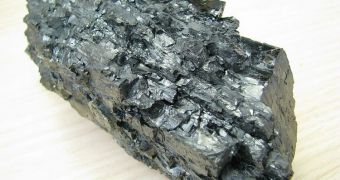Following a new scientific study, researchers have proposed a new potential cause for the Permian-Triassic (P-Tr) extinction event, which is informally known as the Great Dying. The team says that a huge burning of coal may have brought about the largest extinction in our planet's history.
The Great Dying was so brutal that it also affected insects, the only known event of its type to do so. In addition, it killed 96 percent of all living marine species, and as much as 70 percent of vertebrates living on land. It is estimated that life needed millions of years to reestablish a foothold on Earth.
Possible explanations for what happened range from an asteroid impact and massive supervolcano eruptions to catastrophic floods, global warming and other similar occurrences. However, figuring out exactly what happened may never be entirely possible, as the event occurred 252 million years ago.
According to investigators at the Scripps institution of Oceanography (SIO), at the University of California in San Diego (UCSD), it could be that an explosive burning of coal was responsible for the massive extinction.
They say that vast amounts of coal may have been idling around when lava coming up from Earth mantle set it on fire, and melted it through exposure to high temperatures. The burning may have also been accompanied by explosions, the group says, quoted by LiveScience.
This process may have lasted for decades, centuries, or perhaps even millennia, since no known natural mechanism could have stopped such an occurrence, LiveScience reports. This idea came to experts after studying fly ash compounds deposited in a rock layer just before the P-Tr. event.
Darcy Ogden, a research scientist at SIO and an expert on the new study, says that the geological evidences point at a huge burning of coal, that lasted between tens to thousands of years. There aren't really any other ways of interpreting the geological readings.
“The coal-basalt mixture comes out of the ground as a fluid, like oil, then ignites and combusts upon contact with the oxygen in the air. The resulting soot, fly ash and gases are driven into the atmosphere in a large, dirty plume,” Odgen says.
Details of the new study were published in the December 19 issue of the esteemed journal Proceedings of the National Academy of Sciences (PNAS). The team believes that a region of volcanic rocks called the Siberian Traps may have been the spot where coal-lava mixtures contacted the air.

 14 DAY TRIAL //
14 DAY TRIAL //